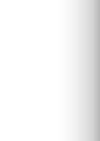1. Grigorakis K, Alexis MN, Taylor KDA, Hole M. Comparison of wild and cultured gilthead sea bream (Sparus aurata); composition, appearance and seasonal variations. Int J Food Sci Technol. 2002;37:477-84. [
Link] [
DOI:10.1046/j.1365-2621.2002.00604.x]
2. Chyun JH, Griminger P. Improvement of nitrogen retention by arginine and glycine supplementation and its relation to collagen synthesis in traumatized mature and ageing rats. J Nutr. 1984;114(9);1697-704. [
Link] [
DOI:10.1093/jn/114.9.1697]
3. Toppe J, Aksnes A, Hope B, Albrektsen S. Inclusion of fish bone and crab by-products in diets for Atlantic cod, Gadus morhua. Aquaculture. 2006;253(1-4):636-45. [
Link] [
DOI:10.1016/j.aquaculture.2005.09.015]
4. Valfré F, Caprino F, Turchini GM. The health benefit of seafood. Vet Res Commun. 2003;27(Suppl 1):507-12. [
Link] [
DOI:10.1023/B:VERC.0000014208.47984.8c]
5. Cahu C, Salen E, de Lorgeril M. Farmed and wild fish in the prevention of cardiovascular diseases: Assessing possible differences in lipid nutritional values. Nutr Metab Cardiovasc Dis. 2004;14(1):34-41. [
Link] [
DOI:10.1016/S0939-4753(04)80045-0]
6. Yildiz M. Mineral composition in fillets of sea bass (Dicentrarchus labrax) and sea bream (Sparus aurata): A comparison of cultured and wild fish. J Appl Ichthyol. 2008;24(5):589-94. [
Link] [
DOI:10.1111/j.1439-0426.2008.01097.x]
7. Aragão C, Conceição LEC, Dinis MT, Fyhn HJ. Amino acid pools of rotifers and Artemia under different conditions: Nutritional implications for fish larvae. Aquaculture. 2004;234(1-4):429-45. [
Link] [
DOI:10.1016/j.aquaculture.2004.01.025]
8. Fuentes A, Fernández-Segovia I, Serra JA, Barat JM. Comparison of wild and cultured sea bass (Dicentrarchus labrax) quality. Food Chem. 2010;119(4):1514-8. [
Link] [
DOI:10.1016/j.foodchem.2009.09.036]
9. Lupatsch I, Kissil GW, Sklan D. Comparison of energy and protein efficiency among three fish species: Gilthead seabream (Sparus aurata), European seabass (Dicentrarchus labrax) and white grouper (Epinephelus aeneus): Energy expenditure for protein and lipid deposition. Aquaculture. 2003;225(1-4):175-89. [
Link] [
DOI:10.1016/S0044-8486(03)00288-6]
10. FAO/WHO, World Health Organization, Food and Agriculture Organization of the United Nations. Protein quality evaluation: Report of the joint FAO/WHO expert consultation, Bethesda, Md., USA, 4-8 December 1989. Rome: FAO; 1991. Report No.: ISBN 92-5-103097-9. [
Link]
11. AOAC, AOAC International. Official methods of analysis of AOAC International. 18th Edition. Horwitz W, Latimer GW, editors. Arlington: AOAC International; 2006. [
Link]
12. Folch J, Lees M, Stanley GHS. A simple method for the isolation and purification of total lipids from animal tissues. J Biological Chem. 1957;226:497-509. [
Link]
13. Moore S, Stein WH. Chemical structures of pancreatic ribonuclease and deoxy ribonuclease. Science. 1973:180(4058):458-64. [
Link] [
DOI:10.1126/science.180.4085.458]
14. Hoyle NT, Merritt JH. Quality of fish protein hydrolysate from herring (Clupea harengus). J Food Sci. 1994;59(1):76-9. [
Link] [
DOI:10.1111/j.1365-2621.1994.tb06901.x]
15. Njinkoue JM, Gouado I, Tchoumbougnang F, Yanga Ngueguim JH, Ndinteh DT, Fomogne-Fodjo CY, et al. Proximate composition, mineral content and fatty acid profile of two marine fishes from Cameroonian coast: Pseudotolithus typus (Bleeker, 1863) and Pseudotolithus elongatus (Bowdich, 1825). NFS J. 2016;4:27-31. [
Link] [
DOI:10.1016/j.nfs.2016.07.002]
16. Kim SM, Kim H, Lee WC, Kim HC, Lee H, Lee DS, et al. Monthly variation in the proximate composition of jack mackerel (Trachurus japonicus) from Geumo Island, Korea. Fish Res. 2016;183:371-8. [
Link] [
DOI:10.1016/j.fishres.2016.07.009]
17. Hosseini A, Kochanian P, Marammazi J, Yavari V, Savari A, Salari-Aliabadi MA. Length-weight relationship and spawning season of Sphyraena jello C, from Persian Gulf. Pak J Biol Sci. 2009;12(3):296-300. [
Link] [
DOI:10.3923/pjbs.2009.296.300]
18. Lena GD, Nevigato T, Rampacci M, Casini I, Caproni R, Orban E. Proximate composition and lipid profile of red mullet (Mullus barbatus) from two sites of the Tyrrhenian and Adriatic seas (Italy): A seasonal differentiation. J Food Compos Anal. 2016;45:121-9. [
Link] [
DOI:10.1016/j.jfca.2015.10.003]
19. Zhao F, Zhuang P, Song Ch, Shi ZhH, Zhang LZh. Amino acid and fatty acid compositions and nutritional quality of muscle in the pomfret, Pampus punctatissimus. Food Chem. 2010;118(2):224-7. [
Link] [
DOI:10.1016/j.foodchem.2009.04.110]
20. Karunanidhi K, Rajendran R, Pandurangan D, Arumugam G. First report on distribution of heavy metals and proximate analysis in marine edible puffer fishes collected from Gulf of Mannar Marine Biosphere Reserve, South India. Toxicol Rep. 2017;4:319-27. [
Link] [
DOI:10.1016/j.toxrep.2017.06.004]
21. Tufan MAB, Sevgili H, Köse S. Seasonal changes in proximate composition and fatty acid profile of puffer fish (Lagocephalus sceleratus Gmelin, 1789) from the Mediterranean Sea of Turkey. J Aquat Food Prod Technol. 2013;22(2):178-91. [
Link] [
DOI:10.1080/10498850.2011.638151]
22. FAO, WHO, UNU. Energy and protein requirement, WHO Technical Report Series No. 724. Report No.: ISBN 92 4 120724 8. Geneva, Switzerland: WHO; 1985. [
Link]
23. Iqbal A, Khalil IA, Ateeq N, Khan MS. Nutritional quality of important food legumes. Food Chem. 2006;97(2):331-5. [
Link] [
DOI:10.1016/j.foodchem.2005.05.011]
24. Wesselinova D. Amino acid composition of fish meat after different frozen storage periods. J Aquat Food Prod Technol. 2000;9(4):41-8. [
Link] [
DOI:10.1300/J030v09n04_05]
25. Iwasaki M, Harada R. Proximate and amino acid composition of the roe and muscle of selected marine species. J Food Sci. 1985;50(6):1585-7. [
Link] [
DOI:10.1111/j.1365-2621.1985.tb10539.x]
26. Adeyeye EI. Amino acid composition of three species of Nigerian fish: Clarias anguillaris, Oreochromis niloticus and Cynoglossus senegalensis. Food Chem. 2009;113(1):43-6. [
Link] [
DOI:10.1016/j.foodchem.2Link008.07.007]
27. Young VR, Pellett PL. Plant proteins in relation to human protein and amino acid nutrition. Am J Clin Nutr. 1994;59(5):1203S-12. [
Link] [
DOI:10.1093/ajcn/59.5.1203S]
28. Mahanty A, Ganguly S, Verma A, Sahoo Sh, Mitra P, Paria P, et al. Nutrient profile of small indigenous fish puntius sophore: Proximate composition, amino acid, fatty acid and micronutrient profiles. Natl Acad Sci Lett. 2014;37(1):39-44. [
Link] [
DOI:10.1007/s40009-013-0186-3]
29. Witte MB, Thornton FJ, Tantry U, Barbul A. L-Arginine supplementation enhances diabetic wound healing; involvement of the nitric oxide synthase and arginase pathways. Metabolism. 2002;51(10):1269-73. [
Link] [
DOI:10.1053/meta.2002.35185]
30. Mendoza C. Effect of genetically modified low phytic acid plants on mineral Abosorption. Int J Food Sci Nutr. 2002;37(7):759-67. [
Link]
31. Belavady B, Udayasekhara Rao P. Leucine and isoleucine content of jowar and its pellagragenicity. Indian J Exp Biol. 1979;17(7):659-61. [
Link]
32. Mclarney MJ, Pellett PL, Young VR. Pattern of amino acid requirements in human: An interspecies comparison using published amino acid requirement recommendation. J Nutr. 1996;126(7):1871-82. [
Link]
33. Adeyeye EI. The composition of the winged termite (Macrotermes bellicusus). J Chem Soc Niger. 2005;30(2):145-9. [
Link]
34. Dall W. Lipid absorption and utilization in the Norwegian lobster, Nephrops norvegicus (L.). J Exp Mar Biol Ecol. 1981;50(1):33-45. [
Link] [
DOI:10.1016/0022-0981(81)90061-7]
35. Rosa R, Nunes ML. Influence of the reproductive cycle on the biochemical composition of deep-sea decapod Parapenaeus longirostris (Lucas, 1846) in the Portuguese south coast. J Shellfish Res. 2002;21(2):843-9. [
Link]
36. Rosa R, Nunes ML. Seasonal patterns of nucleic acid concentrations and amino acid profiles of Parapenaeus longirostris (Crustacea, Decapoda): Relation to growth and nutritional condition. Hydrobiologia. 2005;537:207. [
Link] [
DOI:10.1007/s10750-004-2841-7]
37. Özyurt G, Polat A. Amino acid and fatty acid composition of wild sea bass (Dicentrarchus labrax): A seasonal differentiation. Eur J Food Res Technol. 2006;222(3-4):316-20. [
Link] [
DOI:10.1007/s00217-005-0040-z]
38. Özyurt G, Polat A, Özkütük S. Seasonal changes in the fatty acids of gilthead sea bream (Sparus aurata) and White Sea bream (Diplodus sargus) captured in Iskenderun Bay, eastern Mediterranean coast of Turkey. Eur Food Res Technol. 2005;220(2):120-4. [
Link] [
DOI:10.1007/s00217-004-1060-9]




























